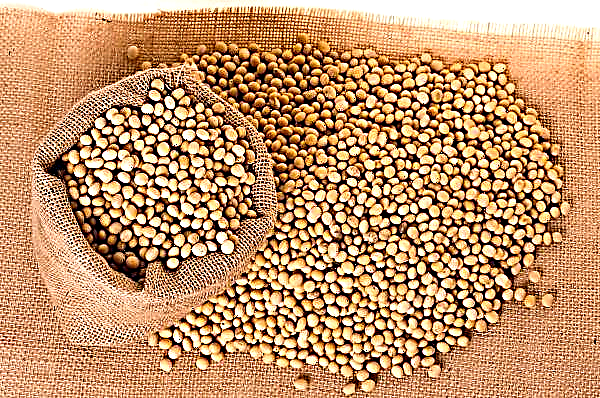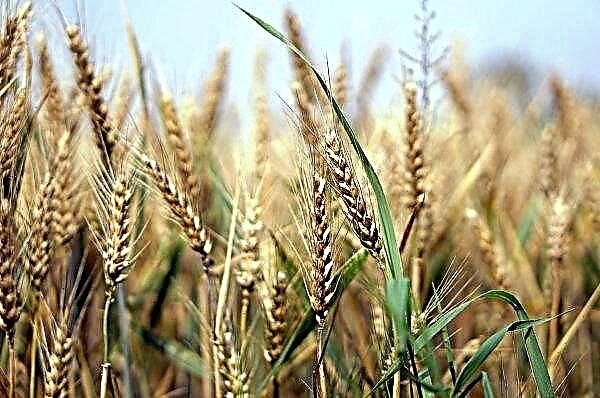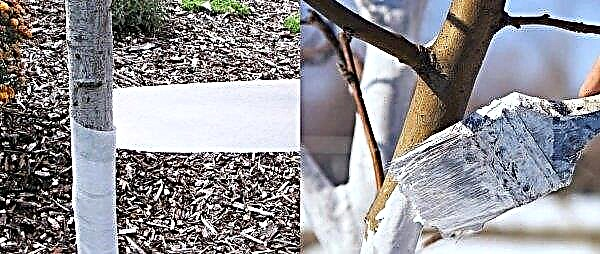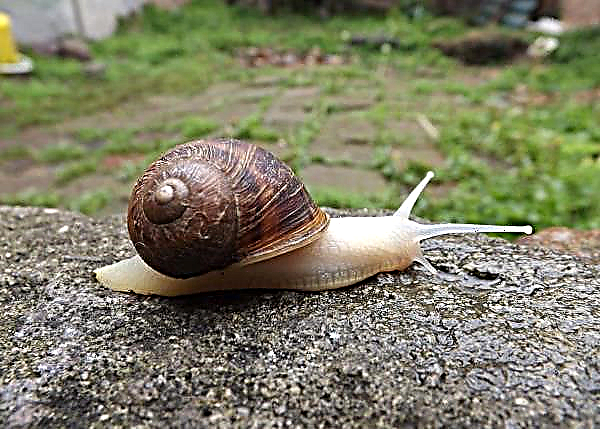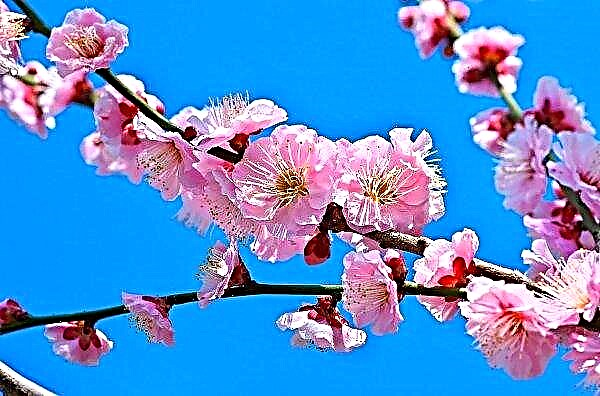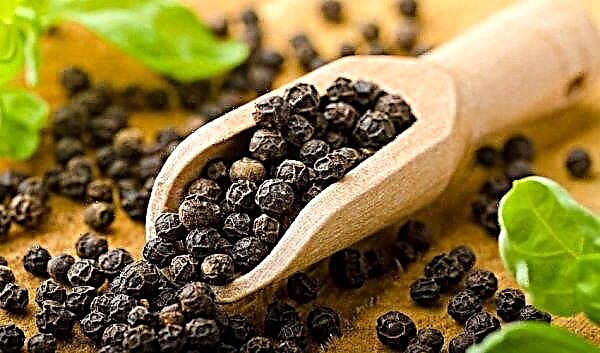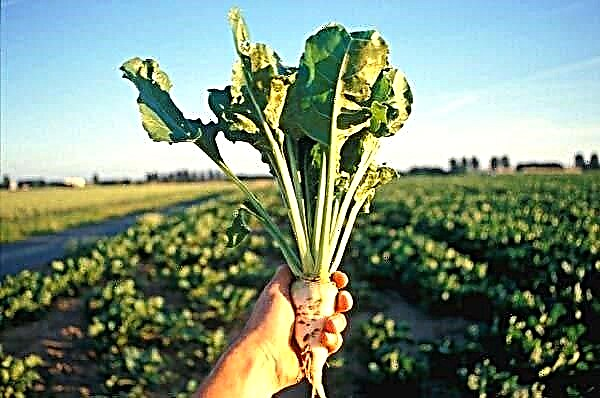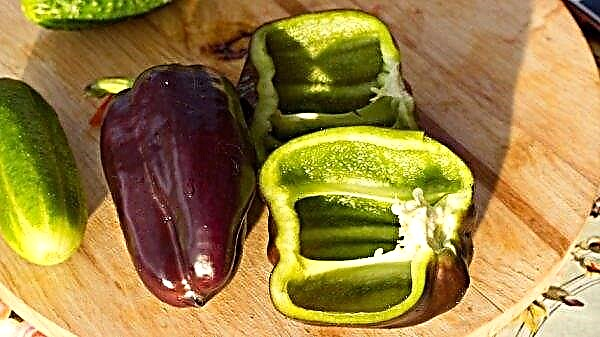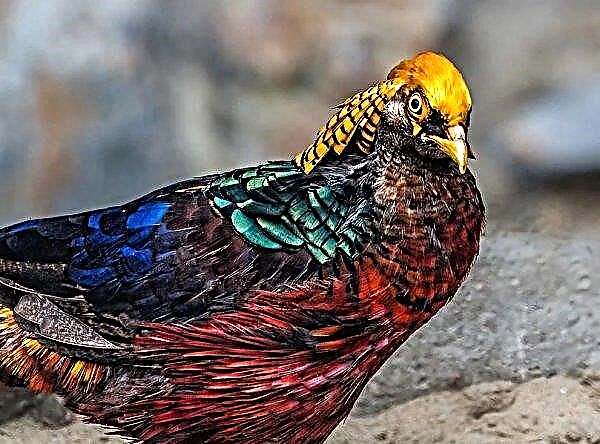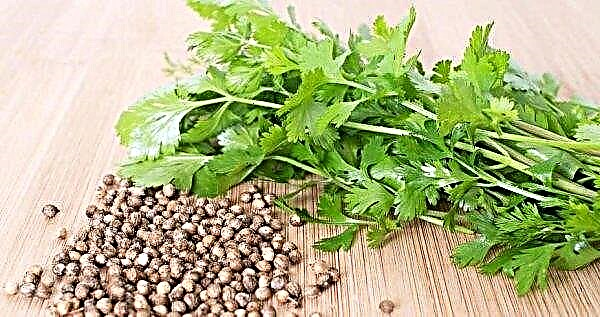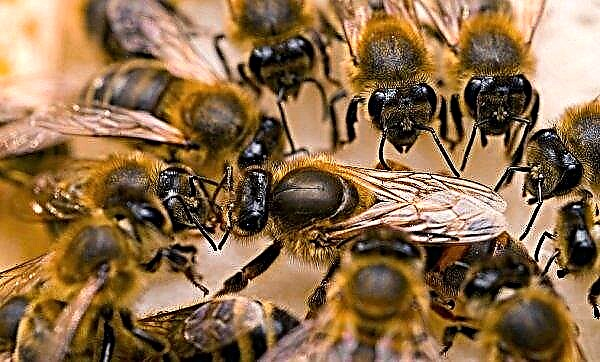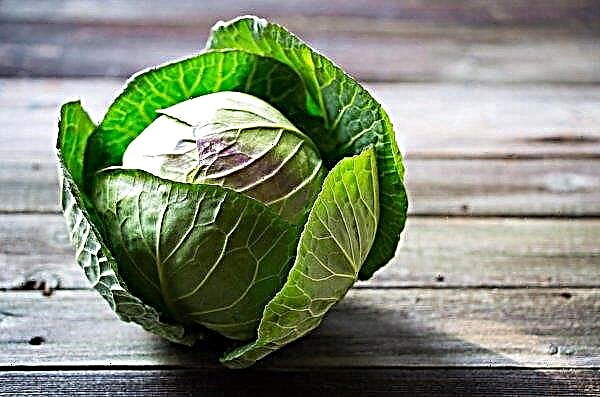Spruce prickly Glauka (picea pungen Glauca) - coniferous tree, and it will be a wonderful decoration for the garden and cottage. Regardless of whether you plant one plant or several, a private courtyard will have a stunning appearance.
Spruce Glauka is undemanding to environmental conditions, does not require complicated care and is characterized by good resistance to frost. About the features of growing conifers, about how to care for plants, about the most common varieties of the group, read below.
Description of Glauka firs
Glauka spruce naturally grows in western North America. Trees are found on the tops of mountain slopes, as well as on the banks of rivers and small bodies of water, where the soil is more humid. The thorns of the plant have a characteristic blue hue, due to which the spruce is also called gray.
Did you know? One of the oldest trees on the planet grows in the Swedish Fulufjellet National Park in the west of the state. This is Old Tjikko spruce. Scientists agreed that the age of the plant is 9.5 thousand years.
The maximum height that spruce trees can reach is 25 m. The cone, having a conical shape, tapers from the lower branches to the apex. The bark has a brown color, and it is thickened, furrowed. Naked shoots are painted in a brownish-yellow hue. The length to which brown oval-shaped cones can grow is 7–10 cm. Rigid needles of blue color.

During the first ten years of life, the root system of trees is pivotal and then superficial. The plant begins to bloom in late May or early June. Annual growth in height is 30 cm, and in girth - 10-15 cm. If the growing conditions of spruce are favorable, she will live for about 300 years.
Common group varieties
Glauka spruce trees attract the attention of gardeners due to the unusual colors of the needles and the amazing shape of the crown. All varieties are in demand, interesting and popular in their own way. They are used to decorate private courtyards, city squares and, at their discretion, create an unusual garden design. A description of the most common varieties of Glauka spruce is provided below.
Globose
The dwarf representative of the Glauca firs is Globosa (picea Glauca Globosa). The variety resembles an ornamental shrub, because the trunk is closed with dense needles. The height of an adult plant does not exceed 2 m. The diameter of the crown is up to 3 m. It has a spherical shape, but with age it transforms into a kind of triangle. The shoots are 9-10 cm long and 1 cm wide. The branches are silver-blue. For 12 months they grow to 5 cm.
Brown cones slightly elongated. The variety is unpretentious, it is permissible to plant it in any soil, but the main thing is that the soil is moderately moist. Globose should be grown in areas where there is enough sunlight. The grade is frost-resistant. In the harshest winter months, it is recommended to cover the plant with agrofibre or spruce branches. This will eliminate the possibility of tree burns in early spring, when the sun is already bright, but the earth has not yet thawed.
Important! Plots where vegetable crops were previously grown are completely unsuitable for planting spruce. In such places, the tree will not take root at all or die some time after planting.
Konika
Glauca Conica is also a dwarf species. Another name for the variety is Canadian, and the reason is that it was in Canada in 1904 that Konica was bred. At the age of 50-60 years, the tree grows by 3-4 m. Variety plants develop extremely slowly with a life span of 300-500 years. The annual growth of the tree is 3-4 cm during the first ten years, and subsequently only 1.5–2 cm.
The crown diameter is 1–1.5 m. The needles are soft, conical in shape, bluish-green, smells nice. The aroma of Konica needles resembles the smell of currant leaves. The variety rarely bears fruit, if cones appear, then grow up to 6 cm in length. Konika prefers shaded areas. It has good resistance to frost.
Pendula
One of the most beautifully growing varieties of Glauca spiny spruce is Glauca Pendula, which was introduced into the culture of Ari Coster in 1895. The trunk as such is absent from the tree, and its role is played by any selected powerful branch attached to the support.
Plant height depends on the host. If you stop tying up the spruce, the top will hang or build up support, due to which it will begin to reach up. In small gardens, Pendula grows by 3–5 m, and in vast areas - 8–10 m. In width, it reaches 1.5 m. By trimming the crown of the tree, any shape can be achieved.

The branches are strong, rigid. Blue needles are quite dense, have a length of 1.5–2 cm, and the needles are slightly curved. The variety is resistant to drought, but it is better to plant in moderate moisture in the soil and water it according to the rules. The main condition is that the soil should be fertile, and the site should be sunny. Pendula frost resistance is high. For 12 months, the plant grows by 30 cm.
Procumbens
Small sizes have Glauca Prokumbens (Glauca Prosumbens). At 10 years old, its height is 0.2 m with a diameter of 1.2 m. The crown is atypical in shape, the branches lie on top of each other. The needles are hard to the touch, the green needles are straight and thick. The variety is not very demanding on the soil. Prokumbens can grow both in the peat lands of the North and in the chernozem steppe zone.

The tree quickly adapts to dry sandy soils and to excessively wet. The variety tolerates drought and is characterized by good winter hardiness. Due to its small size, Prokumbens is recommended to be grown in containers that can refresh the appearance of a garden, courtyard or balcony.
Misty Blue
The unusual name Glauca Misty Blue was given for its amazing ability to change color with development. The needles of a young plant are bright green, later a wax coating appears on them. Mature trees have silver needles with blue, in rare cases it becomes a steel shade. Misty Blue is growing well.
By the age of 15, its length is usually 7 m and its width is 4 m. The cone has a stiff crown, branches slightly sloping to the ground. Light brown cones are about 7 cm long. Due to their undemanding nature, the variety is planted in various places - Misty Blue is found in botanical gardens, garden plots, city parks and public gardens.
 The variety is unpretentious in terms of cultivation, however, for Misty Blue, a sunny area, where the soil is of moderate humidity, is more suitable. Drainage should be good.
The variety is unpretentious in terms of cultivation, however, for Misty Blue, a sunny area, where the soil is of moderate humidity, is more suitable. Drainage should be good.
Landing Features
The planting procedure is of great importance. It is important to do everything right, and then the plant will take root and begin to grow for the joy of the owner. The first thing is to decide on a favorable time when it is better to plant. For fir trees, the optimal period for planting is the last week of April or the end of summer.
In these time periods, the root system develops most actively, as a result, adaptation to new living conditions is better and easier. Thus, it is possible to activate the phase of vegetative growth.
Site selection and land preparation
Before embarking on a landing, you must select a site. Most varieties of Glauka prefer sunny terrain. However It is not recommended to choose places where direct rays of the sun fall all day. It is best to stay in the shadow zone, not completely closed from the sun.
 The best option for planting soil is loamy.
The best option for planting soil is loamy.
Spruce does not tolerate excess moisture, and even more so does not accept stagnation of water. That is why the drainage layer in the landing pit must be laid out necessarily. Before planting, mineral fertilizer should be added. Perfectly suitable "Nitroammofoska." The tool is applied at the rate of 1 glass of fertilizer per plant.
 For planting, you should choose only high-quality seedlings with a branched and slightly moist rhizome. Samples with a drooping crown and yellowed needles are not suitable.
For planting, you should choose only high-quality seedlings with a branched and slightly moist rhizome. Samples with a drooping crown and yellowed needles are not suitable.
Landing process
It’s easy to plant Glauka’s prickly spruce. Even an inexperienced gardener will cope with this.
Step-by-step landing instructions:
- Begin by digging a landing pit. It should be at least 60 cm deep and 50-60 cm in diameter.
- The bottom of the recess is laid out with a layer of drainage. Its thickness is about 20 cm. As a drainage, it is recommended to use pebbles of a small fraction, fragments of ceramics or broken brick, the selected material should be mixed with crushed stone and sand.
- Soil is poured on top of the drainage layer. Previously, the soil is combined with peat and humus in the same proportion.
- Next, the seedling is removed from the tank and it is transferred to the hole.
- Then the pit is covered with soil so that the root neck is completely covered.
- Around the pit sand is poured and well compacted the ground near the plant.
- At the end, it is necessary to water the seedling (20 liters of water under each trunk).
- The area around the hole should be mulled using peat, spruce needles or other material.
- After a day, it remains to loosen the earth around the pit, you need to deepen by 5-6 cm.

If you plan to plant several plants at once, keep the distance between the specimens: it should be at least 2 m. This is the optimal distance so that adult trees do not disturb each other and fully develop. A small and diseased plant has a bad effect on the health of others, so it should be treated or you will have to get rid of it.
Care
A properly planted tree is only half the battle. You can grow a healthy and strong plant only if you take good care of it. The main components of proper care are watering, top dressing, loosening and mulching. It is these aspects that must be taken into account.
Fertilizer and hydration
Spruce needs regular hydration exclusively during the first 2-3 years after planting. It is important to remember that the roots of the plant are spreading, which means that you will have to water the area with a diameter of 20-30 cm around the trunk. It is recommended to moisturize either before noon or in the evening, when the sun sets.
Each plant requires about 10 liters of water. Watering every 7 days. Over time, the frequency of watering can be reduced to 1 time in two weeks. The volume remains the same - 1 bucket under each barrel.

A plant that develops normally does not require additional nutrition after planting. However, if the tree grows very slowly, it has lost its attractiveness and generally looks painful, you can use fertilizers. It should be fed in the summer. This is carried out according to the system of alternating mineral and organic fertilizers, making the necessary every 7 days.
For example, you feed “Nitroammofoskoy” or “Ammofoskoy” 1 glass of the drug per 1 plant, and a week later a glass of mullein or fermented chicken manure, diluted in water in a ratio of 1:10. Fertilizing is permissible only in well-moistened soilOtherwise, there is a high probability of harming the root system.
 Feeding should be before noon. Fertilizers are applied within 1–1.5 months once a year.
Feeding should be before noon. Fertilizers are applied within 1–1.5 months once a year.
Mulching and cultivation
Regularly loosening the earth around the trees should be exclusively for the first 3-4 years after planting. We must not forget that the roots of the spruce are scattered, and therefore loosening must be carried out very carefully in a diameter of 20-30 cm around the trunk, and you need to deepen by 5-6 cm.
If you loosen deeper, you can harm the root system, located close to the surface of the earth. At first, loosening is carried out after each irrigation - this will provide access to the root system of oxygen. After 7-8 years after planting, loosening the soil is less common. This is done at least once a year.
Did you know? The most expensive musical instruments are made of spruce (for example, the violin Antonio Stradivari worth more than $ 3 million). The high price is due to the unique arrangement of wood fibers.
Mulching is also necessary in the first years of the life of spruce - a mature plant does not need it.
- And the procedure itself is necessary for:
- moisture retention during dry periods;
- enhancing thermal stability in cold weather.
Peat or sawdust are the best options for mulch. Spread in a layer of 6–9 cm wide and 40–50 cm in diameter, that is, around the trunk. Spring cultivation involves mixing the soil with mulch, laid to protect the plant from frost.
 The summer mulching layer is laid out taking into account the dryness and air temperature of the season. It lies before the winter, in the cold, it is slightly renewed and left until the onset of spring.
The summer mulching layer is laid out taking into account the dryness and air temperature of the season. It lies before the winter, in the cold, it is slightly renewed and left until the onset of spring.
The prickly spruce Glauka is an unpretentious conifer, the planting process of which is not difficult. Varietal variety of the group is large - there are dwarf and tall trees. Subject to the rules of planting and care, the spruce will grow beautiful and healthy.

